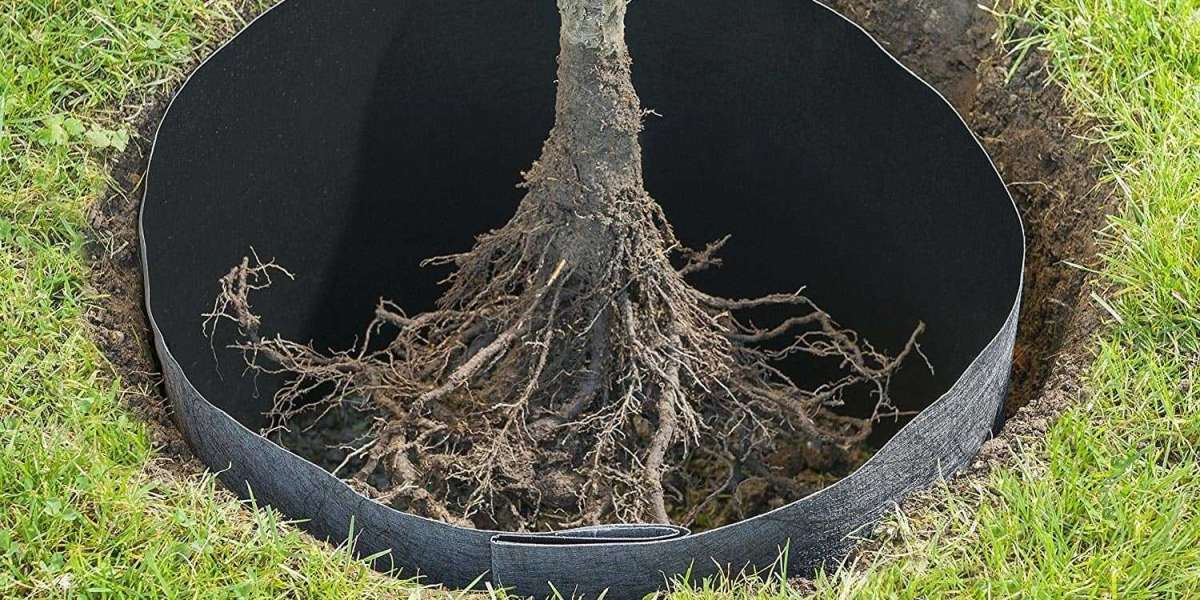Landscaping is both an art and a science, requiring thoughtful planning and robust solutions to ensure the long-term health and aesthetic appeal of gardens and green spaces. One of the crucial elements in maintaining a pristine landscape is managing root systems effectively. Uncontrolled root growth can damage structures, pavements, and other plants, leading to costly repairs and maintenance. This is where HDPE Root barrier hdpe come into play. In this blog, we will delve into what HDPE root barriers are, their benefits, applications, and how they contribute to a sustainable and beautiful landscape.
What Are HDPE Root Barriers?
HDPE, or High-Density Polyethylene, is a versatile and durable thermoplastic made from petroleum. It is known for its high strength-to-density ratio, which makes it ideal for a variety of applications, including root barriers. HDPE Root barrier price are physical barriers placed in the ground to prevent roots from spreading into unwanted areas. These barriers are typically used to protect structures, walkways, and other plants from the invasive growth of tree and plant roots.
Characteristics of HDPE Root Barriers
- Durability: HDPE root barriers are incredibly durable and can withstand the harsh underground environment without degrading.
- Flexibility: Despite their strength, these barriers are flexible enough to be shaped and installed around various landscapes.
- Chemical Resistance: HDPE is resistant to a wide range of chemicals, ensuring the barrier remains intact even in challenging soil conditions.
- Impermeability: The material is impermeable to water and roots, providing an effective barrier that prevents roots from penetrating through.
Advantages of Using HDPE Root Barriers
HDPE root barriers offer numerous benefits that make them a preferred choice for landscapers, gardeners, and urban planners.
1. Protection of Infrastructure
One of the primary reasons for using HDPE root barriers is to protect infrastructure. Roots can cause significant damage to sidewalks, driveways, foundations, and underground utilities. By installing HDPE root barriers, you can prevent roots from reaching and damaging these structures, saving on repair costs and maintaining the integrity of the infrastructure.
2. Control of Plant Growth
HDPE root barriers help control the growth of plants and trees by directing their roots away from unwanted areas. This control is essential for maintaining the desired layout and design of a garden or landscape. It ensures that plants grow in designated areas without encroaching on spaces reserved for other purposes.
3. Prevention of Soil Erosion
By controlling root growth, HDPE root barriers also help in preventing soil erosion. Roots can sometimes destabilize soil, leading to erosion problems. Properly installed root barriers ensure that roots grow in a controlled manner, stabilizing the soil and preventing erosion.
4. Environmental Benefits
HDPE root barriers are environmentally friendly. They are made from recyclable materials and are designed to last for many years, reducing the need for frequent replacements. This longevity helps in minimizing environmental impact and promotes sustainable landscaping practices.
5. Easy Installation and Maintenance
HDPE root barriers are relatively easy to install and require minimal maintenance once in place. Their flexibility allows them to be adapted to various landscape designs, and their durability ensures they remain effective for a long time without needing replacement or repairs.
Applications of HDPE Root Barriers
HDPE root barriers are used in a variety of settings, each benefiting from the unique properties of this material.
1. Urban Landscaping
In urban areas, space is often limited, and the presence of trees and plants can cause significant challenges. HDPE root barriers are used to protect pavements, roads, and buildings from root damage. They are essential in ensuring that urban trees and plants grow healthily without causing disruption to infrastructure.
2. Gardens and Parks
In gardens and parks, HDPE root barriers help in maintaining the aesthetic appeal and health of the landscape. They ensure that trees and plants grow in designated areas, preventing overcrowding and competition for nutrients. This control helps in creating well-organized and visually appealing green spaces.
3. Agricultural Settings
In agriculture, controlling root growth is crucial for maximizing crop yields and maintaining soil health. HDPE root barriers are used to direct the roots of certain crops, preventing them from encroaching on areas reserved for other plants. This control helps in optimizing land use and improving agricultural productivity.
4. Construction Sites
During construction, the presence of tree roots can pose significant challenges. HDPE root barriers are used to protect the foundation and other structures from potential root damage. They ensure that the integrity of the construction is maintained, preventing costly repairs and delays.
5. Environmental Conservation Projects
HDPE root barriers are also used in environmental conservation projects to protect native plants and prevent the spread of invasive species. By controlling root growth, these barriers help in preserving the natural habitat and promoting biodiversity.
Installation of HDPE Root Barriers
Installing HDPE root barriers involves several steps to ensure they are effective and long-lasting.
1. Planning and Design
The first step in installing HDPE root barriers is planning and design. This involves identifying the areas where the barriers will be installed and determining the appropriate depth and length based on the types of plants and trees in the area.
2. Trenching
Once the planning is complete, a trench is dug around the area where the root barrier will be installed. The depth of the trench depends on the expected root depth of the plants and trees.
3. Installing the Barrier
The HDPE root barrier is then placed into the trench, ensuring it extends above the soil surface to prevent roots from growing over the barrier. The barrier should be positioned so that it completely encircles the protected area.
4. Backfilling
After the barrier is in place, the trench is backfilled with soil, compacting it to ensure stability. The top edge of the barrier should remain visible to monitor its effectiveness and prevent roots from growing over it.
5. Inspection and Maintenance
Periodic inspection and maintenance are essential to ensure the root barrier remains effective. This involves checking for any signs of root penetration or damage to the barrier and making necessary repairs or adjustments.
Conclusion
HDPE root barriers are an essential tool in modern landscaping and urban planning. Their durability, flexibility, and effectiveness in controlling root growth make them a valuable asset in protecting infrastructure, maintaining landscape aesthetics, and promoting sustainable practices. Whether you are a homeowner looking to protect your garden, a landscaper designing a park, or a city planner managing urban green spaces, HDPE root barriers offer a reliable and long-lasting solution.
By understanding the benefits and applications of HDPE Root barrier sheet, you can make informed decisions that enhance the beauty and functionality of your landscape while safeguarding structures and promoting environmental sustainability. Investing in HDPE root barriers is a step towards a well-organized, aesthetically pleasing, and sustainable environment.
Frequently Asked Questions (FAQs):
FAQ 1: What makes HDPE root barriers from Singhal Industries stand out compared to other root barrier options?
HDPE root barriers from Singhal Industries are renowned for their exceptional durability, flexibility, and chemical resistance. These barriers are designed to withstand harsh underground conditions without degrading, ensuring long-lasting protection for your landscape. Their impermeability to water and roots effectively prevents root penetration, making them an ideal solution for various applications, including urban landscaping, gardens, agricultural settings, and construction sites. The ease of installation and minimal maintenance required further enhance their appeal, providing a reliable and cost-effective solution for managing root growth and protecting infrastructure.
FAQ 2: How do HDPE root barriers from Singhal Industries contribute to environmental sustainability?
HDPE root barriers from Singhal Industries contribute to environmental sustainability by being made from recyclable materials and designed for long-term use. Their durability reduces the need for frequent replacements, minimizing environmental impact. Additionally, these barriers help control root growth, preventing soil erosion and promoting healthy plant development. By managing root systems effectively, they support the creation of well-organized, visually appealing landscapes that enhance biodiversity and preserve natural habitats. The use of HDPE root barriers is a practical step towards sustainable landscaping practices that balance functionality with environmental responsibility.
FAQ 3: In what scenarios are HDPE root barriers from Singhal Industries particularly beneficial?
HDPE root barriers from Singhal Industries are particularly beneficial in a variety of scenarios, such as urban landscaping, where they protect pavements, roads, and buildings from root damage. In gardens and parks, they maintain the aesthetic appeal and health of the landscape by controlling root growth and preventing overcrowding. Agricultural settings benefit from these barriers by optimizing land use and improving crop yields. Construction sites use HDPE root barriers to protect foundations and other structures from potential root damage, ensuring the integrity of the construction. Additionally, in environmental conservation projects, these barriers help protect native plants and prevent the spread of invasive species, promoting biodiversity and preserving natural habitats.








